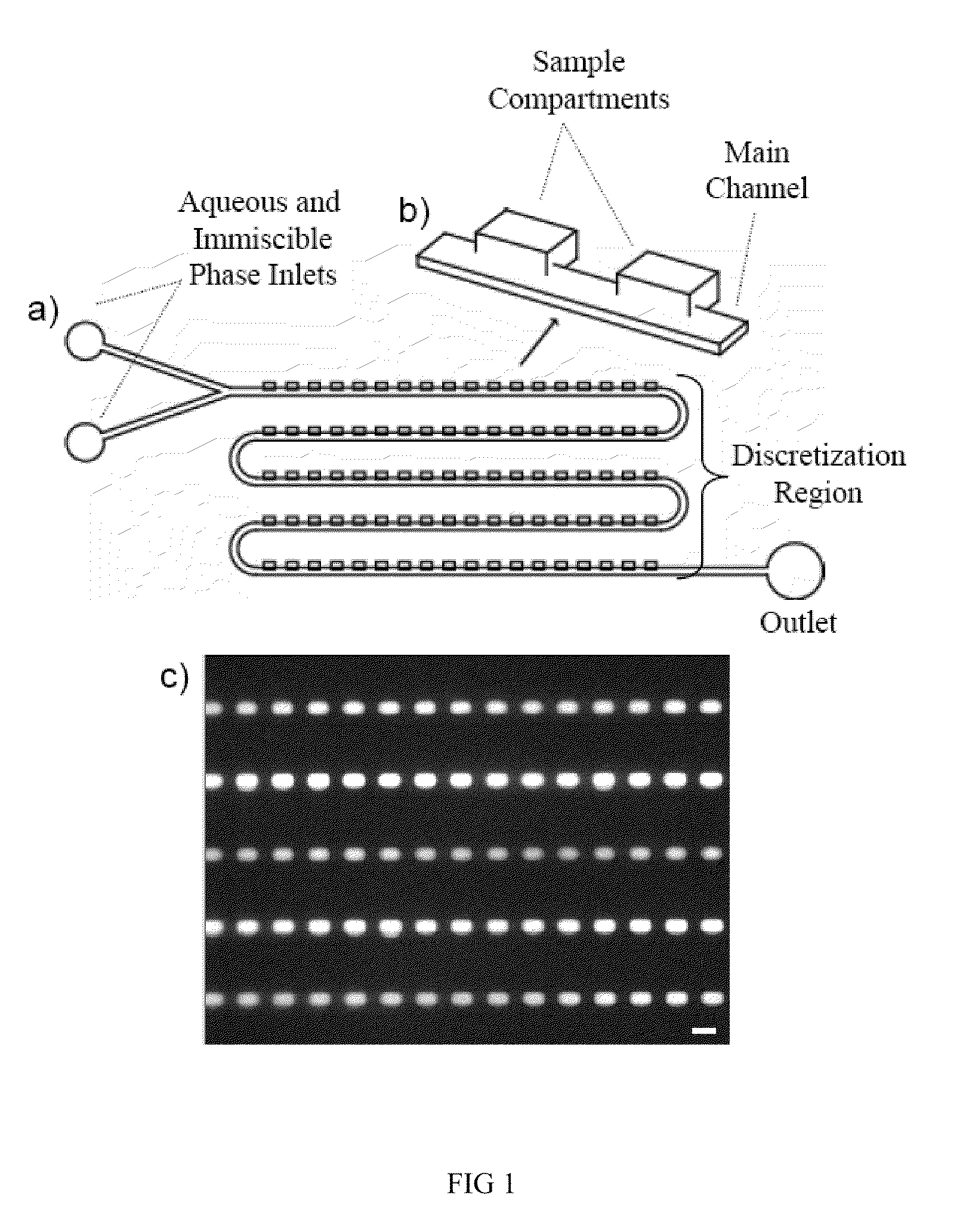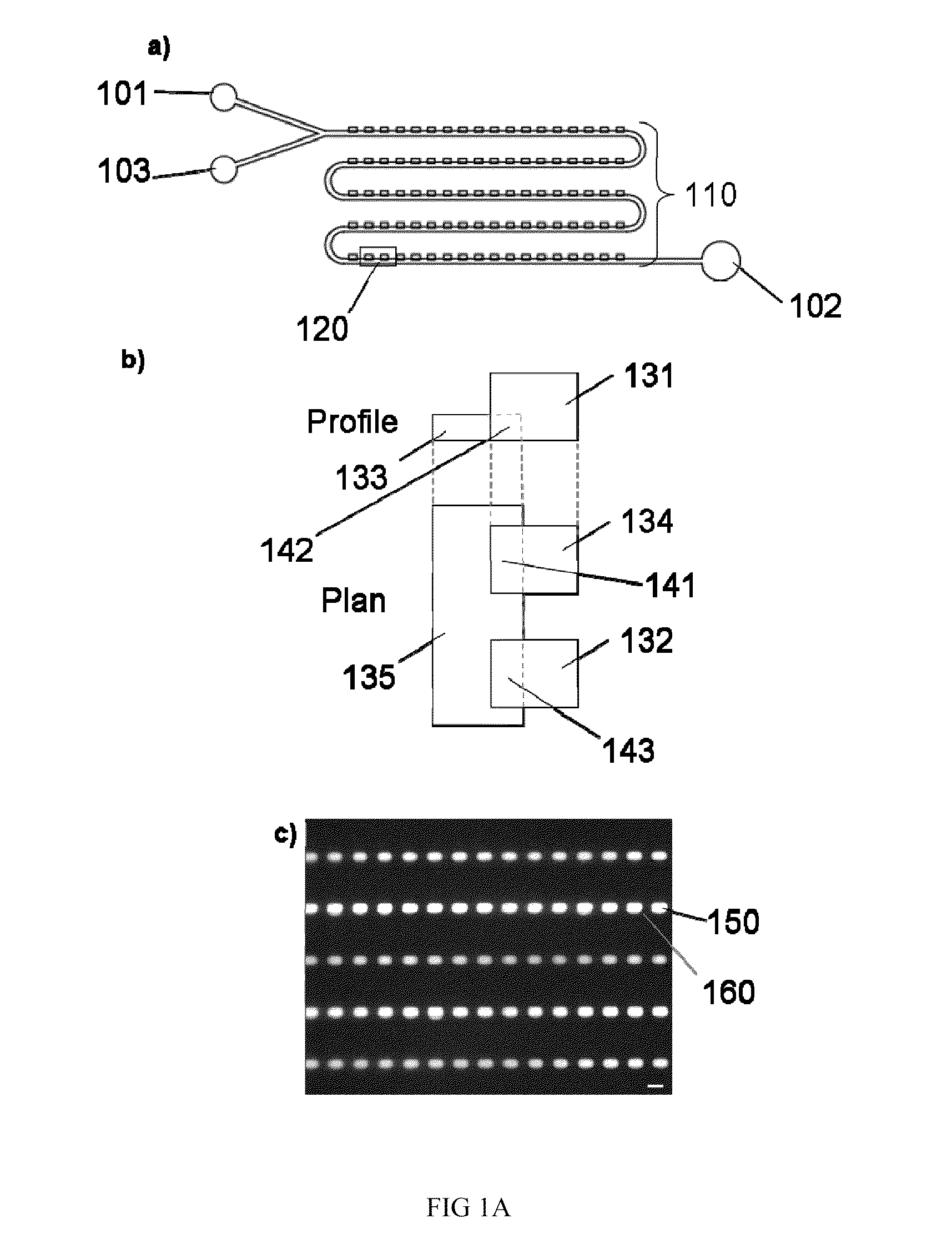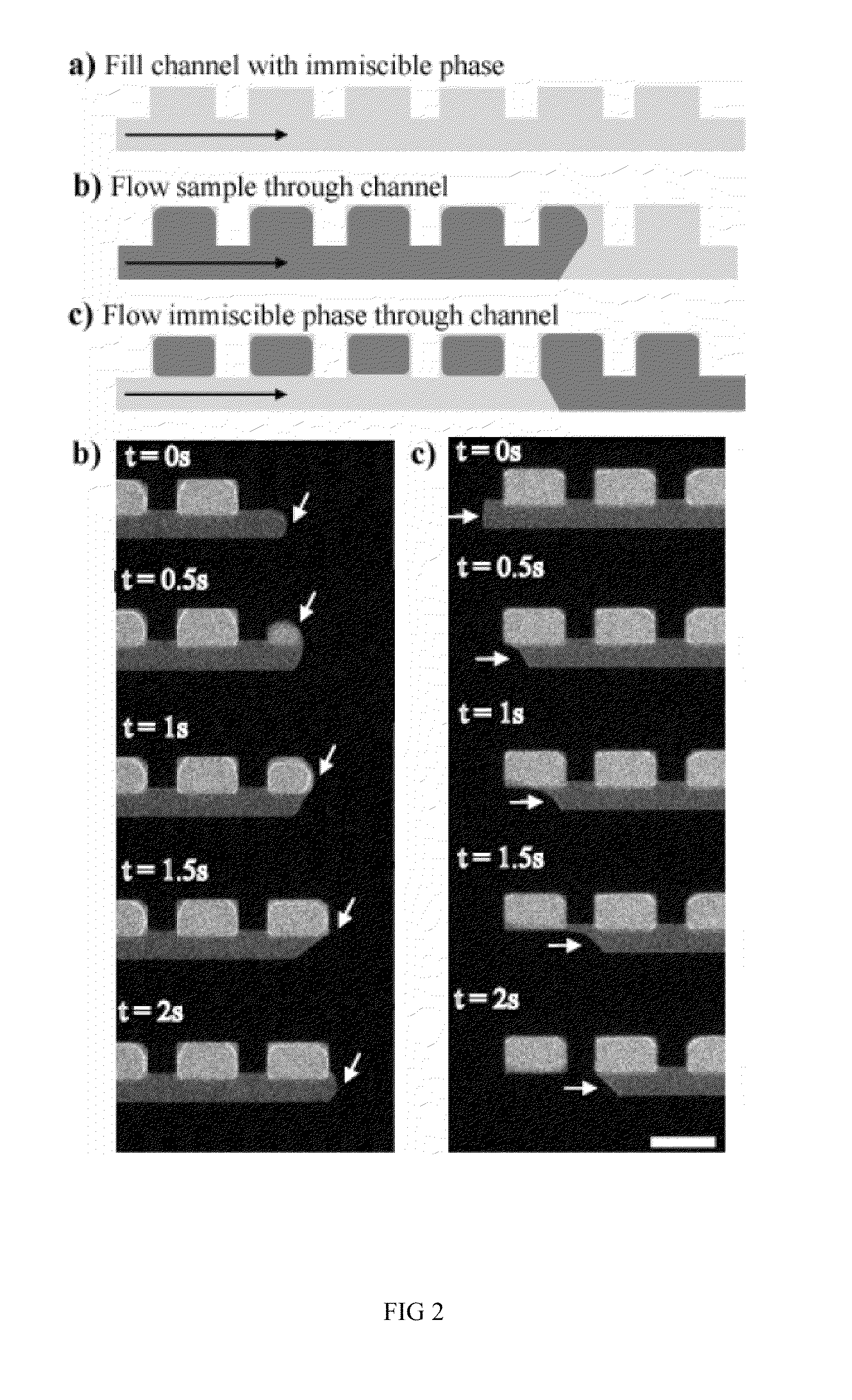Method and apparatus for the discretization and manipulation of sample volumes
- Summary
- Abstract
- Description
- Claims
- Application Information
AI Technical Summary
Benefits of technology
Problems solved by technology
Method used
Image
Examples
example 1
Generation of Packets in Fluidic Harbors with Three Fluids
[0128]There is more than one method by which samples may be discretized using our device. In Fill Method #1 (FIG. 2), the device is first filled with a fluid that is immiscible with the sample phase to be discretized. Next, the sample phase is slowly introduced into the device. Following this, the immiscible phase is flown through the device a second time. In this last step, the sample phase is displaced from the main channel yet remains in the sample compartments, discretizing the sample phase into a volume that is determined primarily by the geometric dimensions of the sample compartment. Sometimes, the discretization can occur during the initial sample phase filling step. For biological assays where the sample is in an aqueous solution, Fill Method #1 would involve filling the device first with an immiscible phase (e.g. oil or Fluorinert), followed by the sample (aqueous phase), and finally the immiscible oil phase is flow...
example 2
Generation of Packets in Fluidic Harbors with Two Fluids
[0135]A second discretization method using our device is displayed in FIG. 4. In this method (Fill Method #2), the device is first filled with the sample phase. The sample phase is then discretized by flowing an immiscible phase through the main channel. For biological assays where the sample is in an aqueous solution, Fill Method #2 would involve filling the device first with the aqueous sample solution, followed by an immiscible phase, such as oil (e.g. mineral oil) or a fluorinated solvent (e.g. Fluorinert). Similar to Fill Method #1, as the immiscible phase flows through the device the sample phase is displaced from the main channel yet remains in the sample compartments. Again, the discretized sample volume is determined primarily by the dimensions of the sample compartment. With only two filling steps compared to the three of Fill Method #1, Fill Method #2 may be advantageous for certain applications.
[0136]In this example...
example 3
Generation of Packets in Fluidic Harbors with Fluids of Different Densities
[0140]An additional method that we have explored for sample discretization is based on exploiting a potential difference in the buoyancy of the sample and immiscible phases. In this method, the sample compartments reside either above or below the main channel, depending on whether the sample phase is more or less buoyant that the immiscible phase. If the sample phase is more buoyant than the immiscible phase, the compartments are placed above the main channel, if the sample phase is less buoyant than the immiscible phase, the compartments are below the main channel. FIG. 5 contains examples of potential discretization region geometries that may be used with this method. This method may be carried out by introducing either sample or immiscible phase into the device first, and then following the sequential flow outlined for Fill Methods 1 or 2. The specific flow sequence employed can be selected based on what i...
PUM
| Property | Measurement | Unit |
|---|---|---|
| Force | aaaaa | aaaaa |
| Viscosity | aaaaa | aaaaa |
| Volume | aaaaa | aaaaa |
Abstract
Description
Claims
Application Information
 Login to View More
Login to View More - R&D
- Intellectual Property
- Life Sciences
- Materials
- Tech Scout
- Unparalleled Data Quality
- Higher Quality Content
- 60% Fewer Hallucinations
Browse by: Latest US Patents, China's latest patents, Technical Efficacy Thesaurus, Application Domain, Technology Topic, Popular Technical Reports.
© 2025 PatSnap. All rights reserved.Legal|Privacy policy|Modern Slavery Act Transparency Statement|Sitemap|About US| Contact US: help@patsnap.com



